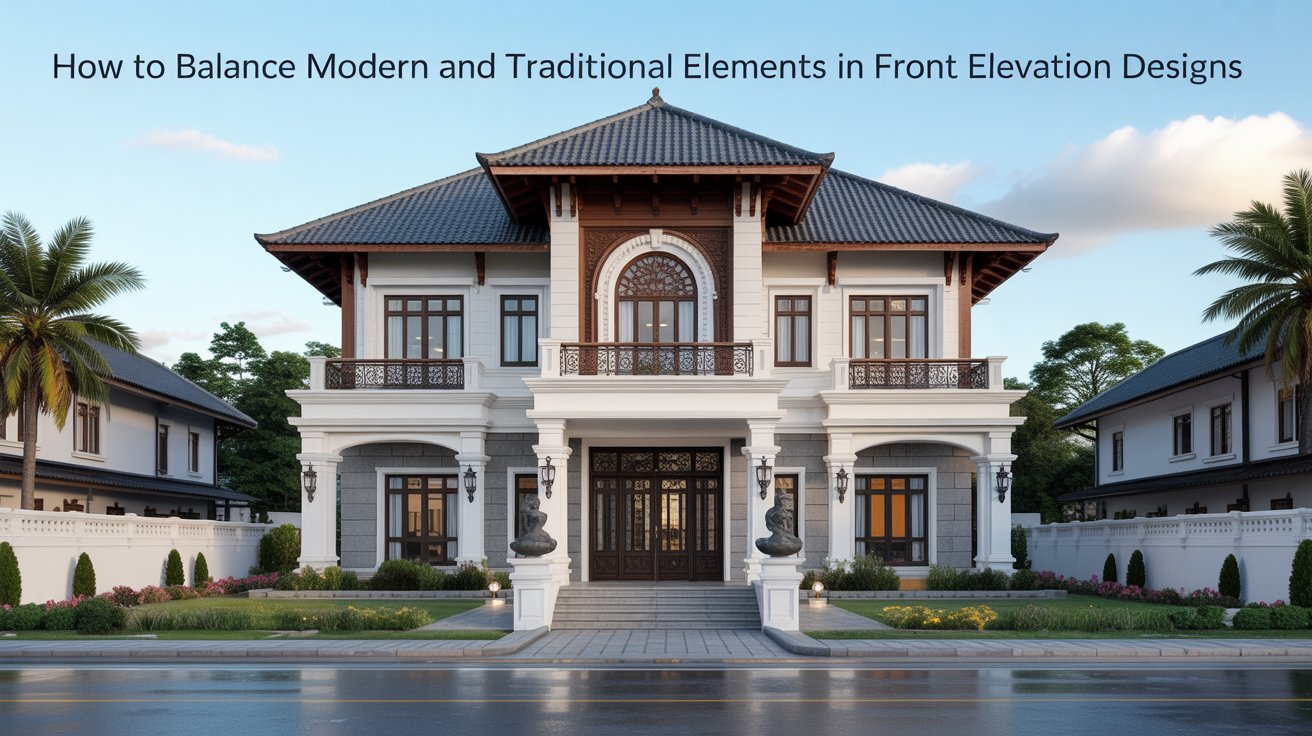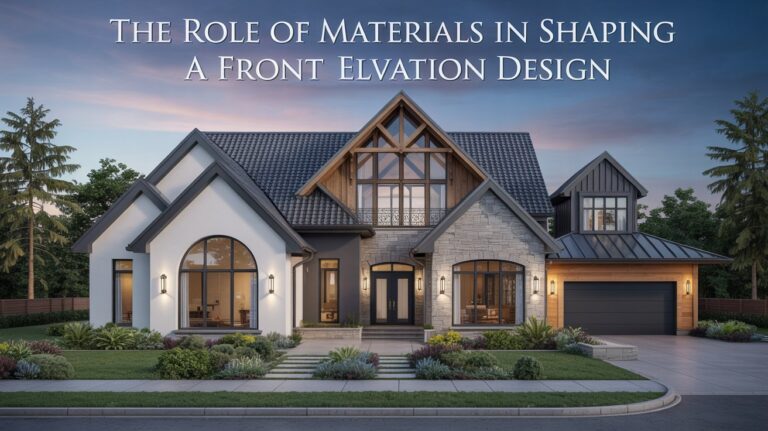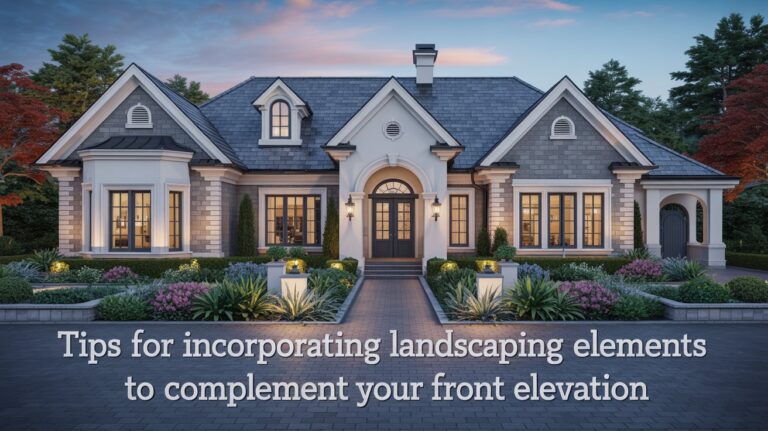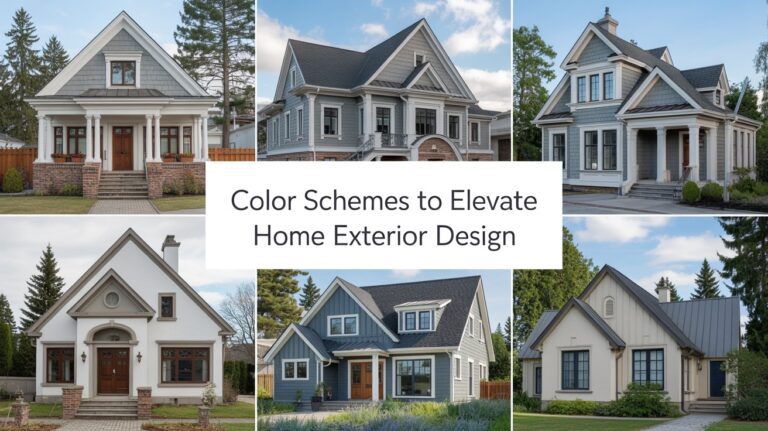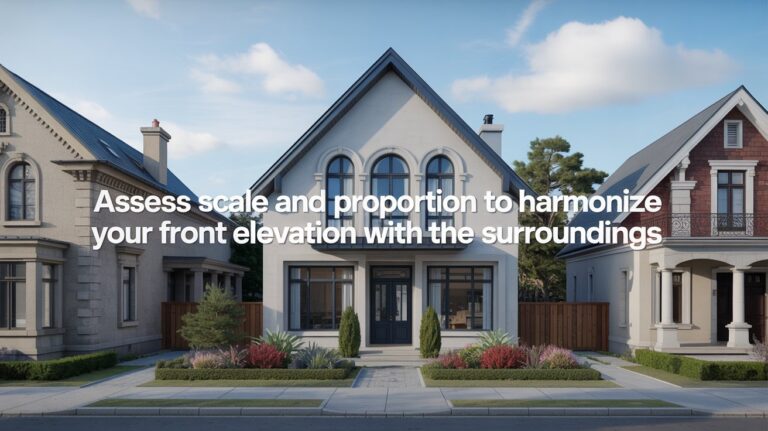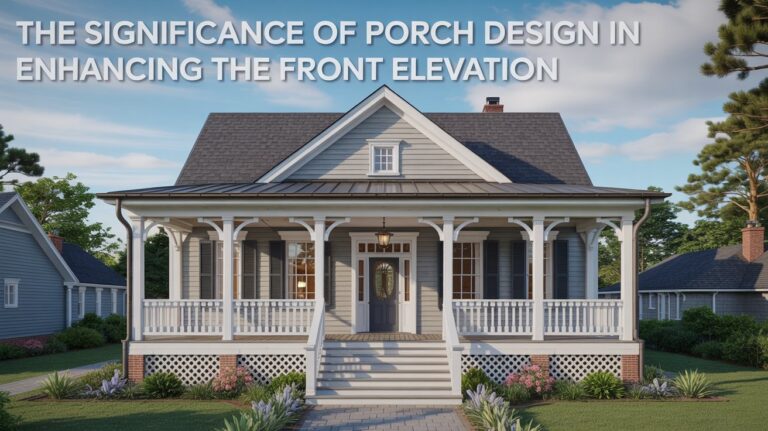How to Balance Modern and Traditional Elements in Front Elevation Designs
I have been, or can be if you click on a link and make a purchase, compensated via a cash payment, gift, or something else of value for writing this post. As an Amazon Associate, I earn from qualifying purchases. Please read my full Affiliate Disclosure for more information.
You balance modern and traditional front elevations by establishing a cohesive design language that honors heritage cues while integrating contemporary materials, proportions, and detailing. Start with a site-aware brief, then pair textures—glass, brick, stone—with careful massing so taller forms anchor corners and human-scale elements read at street level. Use a restrained palette, deliberate contrasts, and subtle ornament to maintain legibility. Plan lighting and landscape to unify elements; curious insights await as you explore further.
Key Takeaways
- Define a cohesive design language that harmonizes proportion, rhythm, and detailing across modern and traditional cues.
- Use a restrained material palette and careful textural contrast to unify elements from both eras.
- Align massing and scale with human-scale cues, placing taller forms at corners to reinforce rhythm.
- Integrate landscape and site narratives to soften lines and anchor the elevation in context.
- Plan lighting, color, and furnishings to support durability and legibility from street level.
Assessing Your Site and Heritage
Evaluating your site and heritage isn’t just a preamble—it’s a blueprint for balance. You’ll assess existing materials, typologies, and surrounding context to inform a respectful, resilient approach. Prioritize heritage preservation by cataloging architectural cues, landscape narratives, and cultural signals that deserve continuity. Consider site integration: topography, sightlines, solar orientation, and drainage patterns, ensuring new elements complement rather than overwhelm. Technical clarity guides decisions on materials, scale, and detailing that align with both tradition and modern performance. This focused due diligence helps you craft a front elevation that honors history while enabling adaptable, lasting aesthetics for today’s needs.
Establishing a Unified Design Language
To establish a unified design language, you’ll define a cohesive set of visual rules that govern proportion, materiality, and detailing across the façade. You’ll translate project goals into a consistent vocabulary: grid rhythms, alignment logic, and a restrained palette that respects context. Architectural symbolism becomes a reference, not a show, guiding ornament and form to communicate intent. Cultural influences inform texture, scale, and siting decisions, ensuring a respectful yet contemporary expression. Documented standards prevent ad hoc decisions, speeding approvals and aligning team effort. The result: a coherent elevation that reads clearly, adapts gracefully, and elevates client confidence through measurable consistency.
Material Pairing: Balancing Modern and Classic Textures
Material pairing blends modern and classic textures to create a façade that feels grounded yet fresh. You’ll balance tactile finishes—glass, metal, brick, or stone—by testing how each reads under natural light and weather exposure. Focus on textural contrast to guide the eye and define hierarchy, pairing smooth, reflective surfaces with rugged, matte ones to avoid monotony. Prioritize material durability for long-term performance, selecting finishes with proven weather resistance and easy maintenance. Compatibility matters: join lines and profiles that respect both eras, ensuring seamless progression. Document performance, so clients understand why specific pairings sustain curb appeal over time.
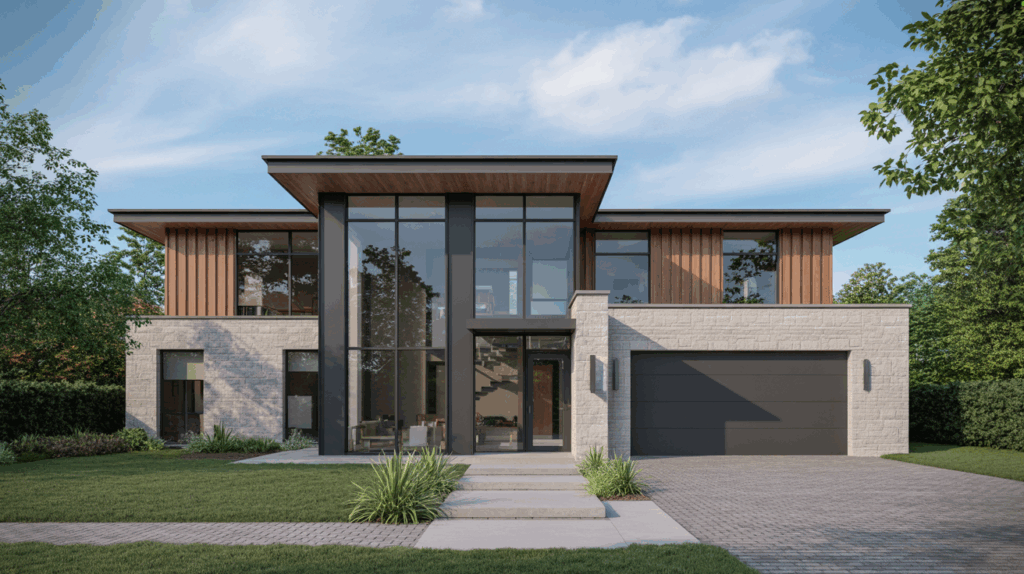
Proportions and Scale for Curb Appeal
When you size and place elements, consider how proportion with massing creates a cohesive façade that reads as intentional from the curb. You’ll balance scale for curb appeal by aligning major volumes with human-scale cues, ensuring doorways, windows, and rooflines read in harmony. This discussion starts by identifying how massing informs proportion and how subtle scale shifts can elevate both modern and traditional expressions.
Proportion With Massing
Proportion with massing is about how the elements of your front elevation relate in size and placement so the overall silhouette reads as intentional and inviting. You balance massing by aligning major forms with clear visual hierarchy, ensuring taller masses anchor the corners while lighter infills preserve air and rhythm. Consider setbacks, roof lines, and window proportions to create cohesive relationships that read at a distance and up close. This approach delivers aesthetic balance, guiding your eye naturally toward entry and focal details. When massing reads well, curb appeal feels deliberate, refined, and responsive to both tradition and modernity.
Scale for Curb Appeal
Scale for curb appeal translates massing harmony into measurable presence. You’ll balance proportion and proportions to create immediate impact without shouting. Consider eye-level reading: entry mass, doorway height, and window rhythms should cooperate with overall façade silhouette. Integrate garden elements to soften lines while preserving legibility; garden integration anchors sightlines and creates approachable tactility. Scale decisions guide material transitions, trim sizing, and accent placements, ensuring traditional or modern cues don’t collide. Plan exterior signage with clear hierarchy and restraint to avoid visual clutter. Aim for cohesive curb narrative that supports entry identity, durability, and understated elegance.
Color Strategies for Timeless Appeal
Color strategies for timeless appeal start with precise hue harmony and deliberate contrast choices. You’ll balance warm and cool tones to support both modern and traditional elements, while ensuring readability and curb-appeal at a glance. Consider curated palettes that favor longevity, with nuanced contrasts that enhance form without shouting, guiding the eye to architectural details.
Hue Harmony Tips
When aiming for timeless curb appeal, harmony among hues starts with a restrained palette and deliberate contrast that enhances architectural features rather than competes with them. You’ll balance color blending and hue contrast to reveal textures, lines, and proportions.
- Choose a dominant base shade and two supporting tones to create a cohesive triad.
- Use lighter accents to highlight verticals and architectural details.
- Pair cool and warm undertones to add depth without clutter.
- test color blends in natural light before finalizing, ensuring quiet elegance.
This approach keeps styles aligned, timeless, and client-focused.
Timeless Contrast Choices
Timeless contrast isn’t about loud statements; it’s about deliberate, repeatable decisions that elevate texture, form, and light. You’ll select restrained pairings that sharpen architectural cues without overpowering them. Focus on material depth, not mere color novelty, to achieve lasting appeal. Prioritize color coordination that reinforces hierarchy—edge, accent, and grounding tones aligned with your materials. Consider lighting interactions, so shadows reveal texture and edges read clearly after dusk. Landscaping synergy matters: plant palettes should echo house hues and scale for balance. Document a repeatable rule set for client approvals, ensuring timeless contrast remains purposeful, legible, and visually coherent across seasons.
Ornamentation: Subtlety Over Statement
Ornamentation should whisper rather than shout, guiding the eye with subtle texture, refined lines, and restrained detailing.
- Focus on ornamentation minimalism: choose one motif per elevation to avoid clutter.
- Use decorative accents sparingly, locating them at focal points like entry thresholds or window cills.
- Favor low-relief textures and monochrome palettes to preserve harmony with both modern and traditional cues.
- Balance scale and proportion so accents enhance, not overwhelm, the overall silhouette and materiality.
You’ll achieve a cohesive façade by prioritizing restraint, tonal continuity, and purposeful placement.
Detailing for Modern Function and Traditional Charm
Balancing modern function with traditional charm hinges on detailing that serves both performance and perception. You align fast-moving needs with timeless cues by detailing joints, materials, and progressions that read as refined yet durable. Emphasize precise scales, clean lines, and controlled ornament to support curb appeal without clutter. For garden aesthetics, integrate low-maintenance planting pockets or framed vistas that soften massing while preserving sightlines. In roof designs, specify weatherproof yet expressive edge detailing, contrasting textures, and proper overhangs to manage shade and rain. Outline maintenance access, warranty-conscious choices, and finish longevity to deliver lasting front elevation harmony.
Lighting and Outdoor Elements
Lighting and outdoor elements knit the entrance experience together, extending the front elevation’s performance into night hours and daily living. You’ll balance illumination and ambiance with precision, ensuring safety while elevating curb appeal. Garden lighting highlights architectural details, guides circulation, and enhances landscape textures. Outdoor furniture anchors seating zones, inviting social flow without visual clutter.
- Define focal lighting and indirect layers
- Integrate weather-resistant furniture with clean lines
- Align fixtures with materials and color palette
- Control brightness and timing for year-round usability
Practical Dos and Don’ts for a Cohesive Facade
To create a cohesive facade, follow practical dos and don’ts that align materials, proportions, and lighting to a shared vision. You’ll balance modern and traditional cues by prioritizing proportional harmony, allowing a restrained material palette, and selecting finishes with similar tactile quality. Do emphasize landscape integration, creating gradual shifts from exterior spaces to façade planes. Don’t overcomplicate textures or colors; keep contrast purposeful and legible from street level. Choose sustainable materials for framing, cladding, and detailing, ensuring durability and low maintenance. Do test lighting scenes at dusk to confirm mood. Don’t neglect drainage, insulation, or accessibility.
Conclusion
You’ve learned to read your site and heritage, then coalign your materials, proportions, and color into one cohesive language. By balancing modern rigor with classic warmth, you’ll achieve curb appeal that’s both purposeful and timeless. Prioritize subtle detailing, thoughtful lighting, and pragmatic setbacks for durability. Keep the client’s priorities—budget, maintenance, and lifestyle—at the forefront, and test designs against real-life routines. In short, harmonize today’s code with yesterday’s charm for a future-forward facade.
